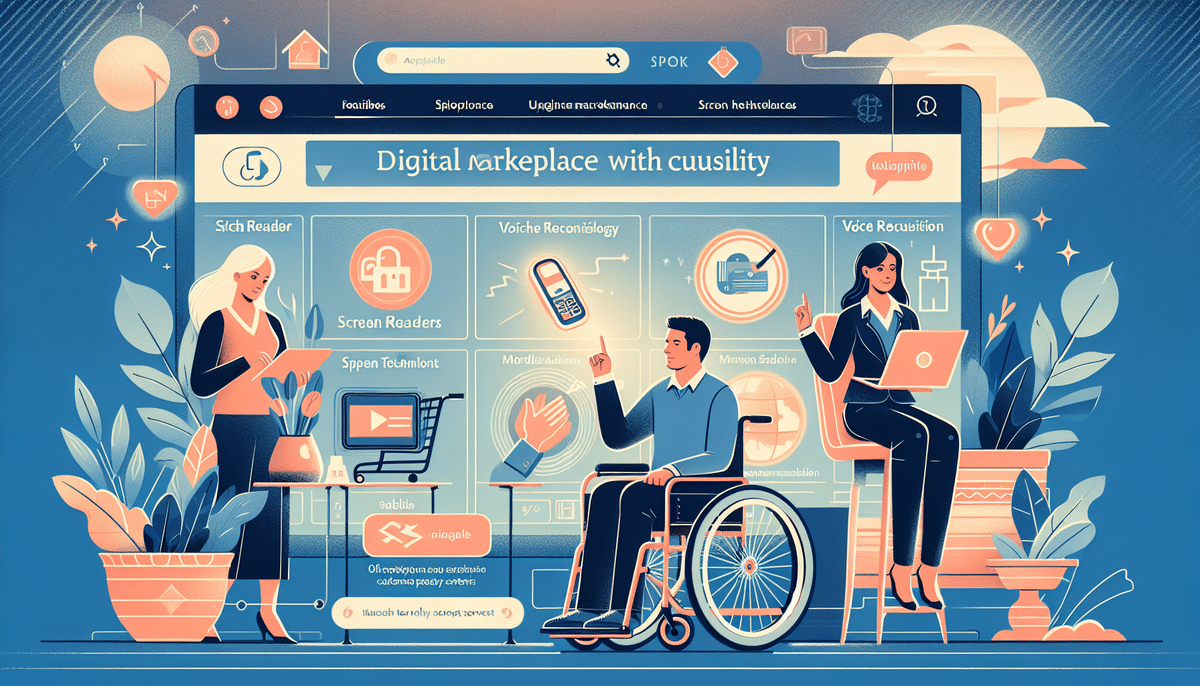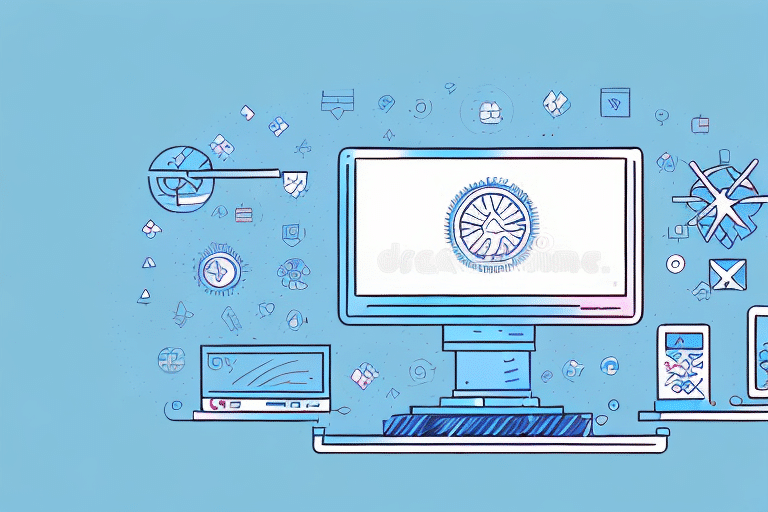Fulfillment Beyond Logistics Solutions: Making E-Commerce Stores Accessible to People with Disabilities
As e-commerce continues to evolve, it is increasingly important to ensure that everyone, including people with disabilities, has equal access to online shopping. In this article, we explore the challenges faced by disabled individuals in online shopping, the benefits of making e-commerce stores accessible, and best practices for creating an inclusive and accessible storefront.
The Importance of Accessibility in E-Commerce
Accessibility is a crucial aspect of creating a successful online business. By ensuring your e-commerce store is accessible to everyone, you open yourself up to a larger audience, increasing your potential customer base and revenue. Additionally, prioritizing accessibility demonstrates your commitment to social responsibility, helping to build brand loyalty and trust with customers.
Moreover, accessibility benefits not only customers with disabilities but also those with slower internet connections or older devices. Optimizing your website for accessibility can improve the overall user experience for all visitors, leading to increased engagement and conversions. Regularly reviewing and updating your website's accessibility features ensures that you provide the best possible experience for all users.
Understanding the Challenges Faced by People with Disabilities in Online Shopping
People with disabilities encounter various challenges when shopping online. Some common issues include:
- Difficulty navigating websites with screen readers
- Incompatibility of assistive technology with certain websites
- Inaccessible content such as images and videos
These challenges can make it difficult for disabled individuals to complete purchases, leading to frustration and discouragement.
Another significant challenge is the lack of clear and concise product descriptions. Many websites use technical jargon or vague language, making it hard for some individuals to determine if a product meets their needs or is compatible with their assistive technology.
Additionally, some websites do not offer alternative payment options for individuals with disabilities. For example, difficulties using a mouse or keyboard can hinder the process of entering credit card information. Offering alternative payment methods like PayPal or Apple Pay can make the checkout process more accessible for disabled individuals.
The Benefits of Making Your E-Commerce Store Accessible to Everyone
Creating an accessible storefront is not only ethically right but also a smart business decision. Benefits include:
- Improved customer satisfaction and loyalty
- Increased target customer base
- Potential boost in search engine optimization (SEO) rankings
- Compliance with legal requirements, avoiding potential legal issues
One key benefit is reaching a wider audience, tapping into a market often overlooked by other businesses. This can help increase your customer base and boost sales.
Another advantage is enhanced brand reputation. Demonstrating a commitment to inclusivity and accessibility builds trust with customers and positions your business as a socially responsible organization, attracting new customers and retaining existing ones.
How to Create an Inclusive and Accessible E-Commerce Storefront
Implementing best practices for an inclusive and accessible storefront involves:
- Ensuring compatibility with assistive technologies such as screen readers and voice recognition software
- Using proper HTML tags to create descriptive and meaningful content for images, videos, and other media
- Designing a clear and easy-to-use navigation system with reduced clutter for improved readability
- Ensuring that the shopping cart and checkout process are accessible to everyone, including disabled individuals
Providing multiple payment options is also essential. Some individuals may not have access to credit cards or may prefer alternatives like PayPal or Apple Pay, ensuring that all customers can complete their purchases without barriers.
Consider the language and tone used on your website. Avoid jargon or overly technical language that may be difficult for some individuals to understand. Use clear, concise language that is easy to read, and adopt inclusive language that welcomes all individuals, regardless of their background or identity.
Designing an Accessible Shopping Cart and Checkout Process for All Customers
The shopping cart and checkout process are crucial parts of the online shopping experience. To ensure accessibility:
- Clearly label all form fields and make them easy to understand
- Avoid using CAPTCHAs or other security measures that might be difficult for disabled individuals to complete
- Ensure the checkout process is easy to navigate, with options for disabled individuals to contact customer service if needed
Consider the visual design by using high-contrast colors and clear typography to assist visually impaired individuals. Provide alternative text for images and videos to ensure screen reader users can understand the content. By designing an accessible shopping cart and checkout process, you ensure a seamless online shopping experience for all customers.
The Role of Assistive Technology in Enhancing Accessibility in E-Commerce
Assistive technology is vital in making e-commerce more accessible for people with disabilities. Technologies such as screen readers, text-to-speech software, and magnifiers help disabled individuals navigate and use e-commerce websites effectively. Ensuring compatibility with these technologies allows disabled customers to make purchases as easily as non-disabled individuals.
Incorporating assistive technology not only benefits disabled individuals but also enhances the overall user experience. For example, adding alt text to images helps visually impaired users and provides better image context for all users. Similarly, providing closed captions for videos assists deaf individuals and makes content more accessible for non-native speakers or those in noisy environments.
Best Practices for Creating Accessible Product Descriptions and Images
Accessible product descriptions and images are essential for any e-commerce store. To make these elements accessible:
- Use descriptive alt tags for images
- Provide accurate and meaningful product descriptions
- Avoid using multimedia elements that might be inaccessible, such as videos without closed captioning
Ensure that text and images are easy to read and understand by using clear, concise language and avoiding jargon or technical terms. Use high-quality images that are large enough to be seen clearly but optimized for fast loading times.
Consider the color contrast of your product images and descriptions to ensure text is easily readable against the background. Avoid color combinations that may be difficult for some users to distinguish, utilizing online tools to check and adjust contrast as needed.
The Impact of Web Accessibility on Search Engine Optimization (SEO)
Web accessibility positively impacts your SEO rankings. Creating accessible content and providing an inclusive online experience can improve engagement metrics such as time on site and bounce rate, signaling to search engines that your website is valuable and relevant to users. Additionally, accessibility enhancements contribute to better mobile-friendliness, a key factor in SEO rankings.
Following the Web Content Accessibility Guidelines (WCAG) not only ensures accessibility but also aligns with SEO best practices, further boosting your site's visibility and search engine performance.
Building Trust and Loyalty with Disabled Customers Through Accessibility
Prioritizing accessibility builds trust and loyalty with disabled customers, leading to repeat business and positive word-of-mouth advertising. Demonstrating a commitment to accessibility helps build a positive reputation within disabled communities, differentiating your business from competitors and fostering long-term customer relationships.
Customers are more likely to engage with and recommend businesses that show genuine inclusivity and consideration for their needs, enhancing your brand's reputation and market position.
Legal Requirements for Ensuring Accessibility in E-Commerce
Various legal requirements mandate that e-commerce stores are accessible to everyone. For instance:
- The Americans with Disabilities Act (ADA) requires businesses to provide equal access to goods and services, including online services.
- The Web Content Accessibility Guidelines (WCAG) offer comprehensive guidance on creating accessible websites and are widely recognized as the standard for digital accessibility.
By adhering to these guidelines, you ensure that your e-commerce store is compliant with legal requirements, avoiding potential legal issues and fostering an inclusive online environment.
Measuring the Success of Your E-Commerce Store's Accessibility Efforts
Measuring the success of your accessibility initiatives is essential to maximizing your e-commerce store's potential. Key metrics to consider include:
- Customer feedback specifically related to accessibility
- SEO rankings and improvements in search engine visibility
- Sales data correlated with accessibility enhancements
Additionally, conducting accessibility audits using tools like WAVE or axe can help identify areas for improvement and track progress over time. Regular assessments ensure that your accessibility efforts are effective and evolving with user needs.
Case Studies: Examples of Successful E-Commerce Stores that Prioritize Accessibility
Several e-commerce stores have successfully prioritized accessibility, reaping significant benefits:
- Target: Target revamped its website to include accessibility features like descriptive alt tags, reviews tailored to specific disabilities, and text-to-speech functionality, enhancing the shopping experience for disabled customers.
- Amazon: Amazon created a separate storefront for customers with disabilities, ensuring tailored access to products and services that meet their unique needs.
By learning from these examples, you can incorporate successful accessibility strategies into your own e-commerce store, improving usability and expanding your customer base.
Future Trends: Innovations That Will Improve Accessibility in Online Shopping
The future of e-commerce accessibility is promising, with numerous emerging technologies and innovations aimed at enhancing accessibility:
- Machine Learning: Exploring automation in website accessibility testing to identify and rectify issues more efficiently.
- Virtual and Augmented Reality: Providing new ways for disabled individuals to engage with e-commerce stores through immersive experiences.
- Voice Commerce: Increasing use of voice-activated shopping tools to simplify the purchasing process for users with mobility impairments.
Staying up-to-date with these emerging trends and integrating them into your accessibility efforts will ensure that your e-commerce store remains inclusive and user-friendly for all customers.
Conclusion: The Bottom Line on Making Your E-Commerce Store More Accessible
Creating an accessible e-commerce store is both ethically commendable and a strategic business move. By prioritizing accessibility, you enhance customer satisfaction, broaden your target audience, and potentially improve your SEO rankings. Adhering to best practices for an inclusive storefront, ensuring compatibility with assistive technologies, and embracing emerging trends will ensure that your e-commerce store is accessible to everyone, including people with disabilities.
Investing in accessibility not only fosters a more inclusive online environment but also drives business growth and builds a reputable, trustworthy brand.






















